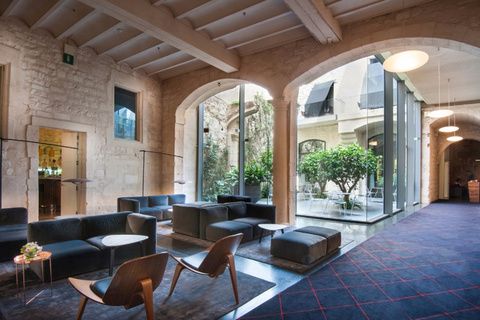
mercer luxury hotels
Desserts and sweets have an extensive trajectory in the national cuisine. Pastry is linked to Christian religious celebrations, as is the case of the Holy Week in Seville.
HISTORY OF PASTRY IN SPAIN
Each culture that has inhabited the territory has left its mark on the traditional sweet recipes. The first cakes date from the time of the Roman Empire, when the precious honey from Hispania is mixed with wheat flour for sweet preparations.
Afterwards, the Arab culture encourages the Spanish pastry-making with the sugar cane importation (in the East sugar cane was refined since the 9th century) and the use of nuts (such as almonds) in many cakes.
With the discovery of America, spices such as cinnamon, vanilla and coffee are introduced. But the ingredient that revolutionizes the European pastries is the cacao coming from Mexico. The first to use it are the Spanish confectioners who add sugar to compensate for their bitterness. Quickly, chocolate becomes an essential recipes ingredient, much appreciated socially.
In the 18th century, the national confectionery is influenced by the modern pastry started in France (with the development of puff pastry). At the end of the 19th, the proliferation of specialized stores open to the public and the new machinery development contribute to the popularization of sweets.
THE SWEETEST CALENDAR
Nowadays, the confectionary specialties are very assorted according to the geographical area and are closely linked to the Christian religious celebrations. Throughout the year, visitors can taste a variety of typical sweets, but Christmas and Easter are the dates with the greatest number of sweet preparations in the whole country.
THE SEVILIAN HOLY WEEK ‘TORRIJAS’
The ‘torrija’ is one of the Holy Week stars in Seville. This traditional sweet dates from the 15h century. The base of the ‘torrija’ is a slice of bread (traditionally bread from previous days) soaked in milk or wine, which is later coated in beaten egg, fried in a pan with olive oil until browned and finished bathing in honey, sugar or cinnamon: As simple as delicious. Don't miss our recipe!
SEE HOME-MADE 'TORRIJAS' RECIPE
.jpg)
At the María Luisa Restaurant of the Mercer Sevilla, the chef makes a dessert of home-made ‘torrijas’ with honey bubbles and mango sorbet.
Both at Mercer Sevilla and Mercer Barcelona desserts and sweets are also protagonists of our kitchens, as with them we try to surprise our guests and share our culture and local traditions.